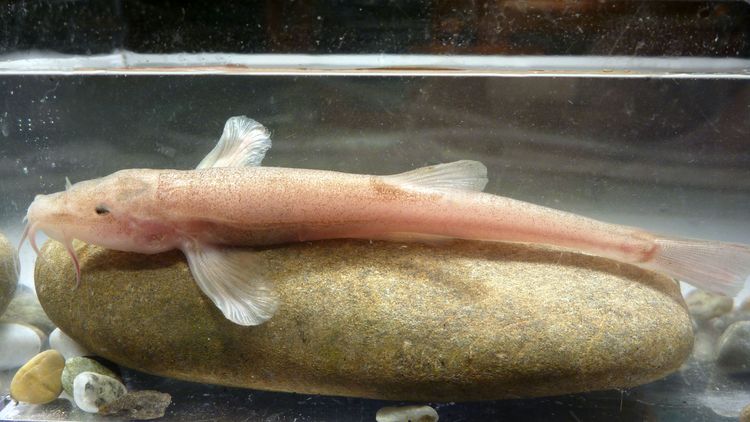It may not be a beauty – pale and rather inconspicuous – but in terms of evolutionary biology this fish is a sensation: the first known European cave fish. Arne Nolte, an evolutionary geneticist from the University of Oldenburg, was involved in the spectacular discovery made north of Lake Constance.
Few creatures live as hidden away as those that live underground. But in fact a richly diverse fauna of which few people are aware lives in caves, in the soil and in the ground water. Until recently fish were not known to live in the dark, underground caves of the European continent. Now a team of cave divers and researchers from the Universities of Oldenburg and Konstanz and the Leibniz Institute for Freshwater Ecology and Inland Fisheries (IGB) Berlin has described Europe's first cave fish in a paper published in the science journal "Current Biology".
The newly discovered species is a loach, a few centimetres long, very pale and probably blind. Hobby diver and co-author Joachim Kreiselmaier first sighted the fish in August 2015 while exploring the Danube-Aach system, an underground karst water system in Southern Germany. He took some photos, and a few months later he was able to catch a live specimen and bring it to the surface.
Experts from Konstanz, Berlin and Oldenburg were then able to study the surprise discovery. As Professor Arne Nolte of the University of Oldenburg's Institute for Biology and Environmental Sciences (IBU) explains, scientists previously believed that cave fish only existed further southwards, where the glaciers of the ice age had not buried all living things beneath them. Indeed, it seems that it was not until the ice age came to an end that the cave loach ventured into the dark and became a cave dweller.
“It was only when the glaciers retreated that the system became a suitable habitat for fish. At some stage after the end of the Würm glaciation, 20,000 years ago at most, they must have migrated there from the Danube. We can see this clearly based on our genetic analyses,” says Nolte, who had already conducted research on the topic at the Max Planck Institute for Evolutionary Biology, Plön. The lead author of the Current Biology paper, Dr. Jasminca Behrmann-Godel of the Limnological Institute at the University of Konstanz, suspects that a large population of cave fish could be living hidden away in the subterranean branch of the Danube.
Despite the relatively short period of evolutionary time that has passed since it "went underground", the cave loach already exhibits traits typically observed in "real" cave fish. "The eyes are much smaller and look almost as if they curve inwards," co-author Dr. Jörg Freyhof of the Leibniz Institute for Freshwater Ecology and Inland Fisheries (IGB) Berlin explains. "The fish also have elongated whisker-like barbels on their heads and larger nostrils than related fish living closer to the surface."
These fish lead a very safe life underground because they have no natural enemies in their habitat. Divers also spotted the small cave shrimp, isopods[a4] and snails on which the cave loach probably feed in the underground passages. It takes cave divers around an hour, swimming against the current, to get to the place where the fish were found, around 600 metres from the Aachtopf spring. Co-author Roland Berka, who has been studying these geological formations for several decades, suspects that this is a labyrinthine system that comprises other underground rivers and lakes.
It is precisely the relatively short evolutionary history of these fish that makes them interesting for future research. They could help scientists to gain a better understanding of adaptation processes.

